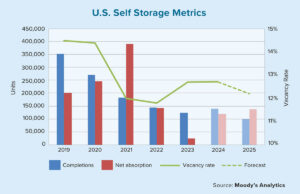Nearly overnight, the COVID-19 pandemic disrupted commercial real estate markets across the country. For the first time in years, commercial mortgage brokers are facing a severe downturn. Lenders have been much more cautious about making loans, tenants are struggling to pay rents and government intervention is needed to keep businesses afloat.
Although the outlook for the U.S. economy and commercial real estate remains unclear, many property sectors were highly distressed as of late August 2020. The ultimate recovery in the real estate market is likely tied to how quickly the country can get the health crisis under control.
In a market like this one, commercial mortgage brokers can expect to be called upon for advice and information. And yet many newer real estate finance professionals are experiencing a bear market for the first time. In a sense, the entire industry needs to relearn concepts and terms of a decade ago, when distressed properties were common and the commercial real estate market was facing a credit crisis during the Great Recession.
Cash flow problems
The outbreak of COVID-19 dealt a sudden blow to business cash flows. As a result, the fine print in many lease agreements has become much more relevant. One of the concepts that many mortgage brokers may encounter for the first time is “force majeure” clauses. Force majeure has gained new relevance given the number of struggling tenants. Lenders are looking carefully at these agreements to gauge their impact on a property’s cash flow.
Depending on how the clause is worded and interpreted by state law, a force majeure clause may excuse tenants from obligations, including the payment of rent, under certain conditions. Generally speaking, these clauses favor the tenant. Some leases do not have this provision at all, while at other times the clause only kicks in due to natural disasters. Some of the more modern lease agreements, however, include pandemics as a condition that triggers a force majeure clause.
COVID-19 also has brought with it the widespread use of forbearance — in essence, extensions on rent or mortgage payments to struggling tenants or owners. Forbearance may prevent a landlord from evicting a tenant for nonpayment. Likewise, mortgage forbearance can prevent a lender from foreclosing and seizing a property from a delinquent business or property owner. Generally speaking, federally insured or guaranteed multifamily mortgages through Freddie Mac, Fannie Mae and the U.S. Department of Housing and Urban Development qualify for temporary forbearance during the crisis.
Although a tenant utilizing a forbearance plan will be on the hook to pay at a later date, it still creates risks for the lender. Lenders will not know if the landlord can meet their debt-service obligations when their tenants are not paying. There also is the risk that the tenant may file for bankruptcy protection prior to repaying the deferred past-due amounts.
Added risk
Lenders face even more risk because their borrowers also may qualify for forbearance. According to the Coronavirus Aid, Relief and Economic Security (CARES) Act, borrowers of federally insured loans for multifamily properties may request lender forbearance.
The CARES Act does not dictate the terms of the forbearance. It is not clear, for example, if the deferred payments will be added to the end of the mortgage term as a balloon payment or if they will be amortized over time. Under either scenario, however, the lender is bearing considerable risk because no (or reduced) cash flow may be coming in to service the debt, and the property owner’s business may fold.
There is no federal requirement for forbearance on non-federally insured private mortgages. A borrower with a privately held mortgage, however, may seek an extension from their lender. Many private lenders are considering payment deferrals as an alternative to going through the lengthy and contentious foreclosure process.
In some cases, tenants with so-called nonessential businesses also have requested rent deferrals for the duration of any forced closures. In other words, the tenant asks to occupy the leased premises and pay no rent for as long as the business is unable to operate at full capacity. The landlord may agree to this if they feel they have no other option.
Many states have moratoriums on evictions of commercial tenants. A landlord may hope to build goodwill with tenants by agreeing to forgive rent payments for a limited time. This is easier than going through the eviction process. Unlike the tenants who are occupying properties rent-free, their landlords are unlikely to obtain the same treatment from lenders. Although some borrowers may request that a portion of their loan be forgiven due to financial stress, lenders typically will not agree to waiving a portion of the debt.
Although many commercial real estate analysts don’t expect an immediate wave of foreclosed properties, the market is expected to see rising delinquencies and foreclosures for the first time in several years.
Foreclosure threat
Foreclosures are another emerging threat resulting from the pandemic. Although many commercial real estate analysts don’t expect an immediate wave of foreclosed properties, the market is expected to see rising delinquencies and foreclosures for the first time in several years. If a lender forecloses on a commercial mortgage, the lender must go through the personal assets or place liens on other property holdings.
If the loan has recourse provisions, however, a lender may place a lien on the debtor’s other properties or assets. It also matters in which state the foreclosure is filed. Some states require a lengthy legal process to take possession of the property.
There can be big differences in how this process plays out, depending on where the property is located and how the loan is structured. If the loan is nonrecourse, for example, the lender’s only legal remedy will be to take possession of the property. The lender can’t go after the borrower’s judicial process. In these states, a lender will often try to gain the title through an alternative process.
For mortgage brokers, it is well worth your time to brush up on concepts about the distressed-property market. Next year, more distressed properties are likely to be sold. Prior to approaching a lender, however, it is important to read the fine print in the lease agreements and understand the various obligations for the seller.
● ● ●
These are uncertain times. What is certain is that COVID-19 has created more value for the services and creative approaches that commercial mortgage brokers offer. This may involve advising a client to sell their property or refinance its value with a new loan. It also could mean helping a client use leverage to reposition a property and bring in new income-generating businesses. Understanding the nuances of today’s distressed market is the place to start. ●
Author
-

Suzanne Hollander is an attorney and professor teaching real estate law, property rights and commercial leasing at Florida International University, and previously taught at New York University. She is the broker of Hollander Realty LLC, representing Florida buyers and sellers. Hollander offers real estate education, speaking and consulting services to lenders, owners, buyers and government entities through her company, Professor Real Estate LLC. She authors the blog at professorrealestate.com. Reach Hollander at suzanne@professorrealestate.com or (786) 202-0587
View all posts






